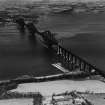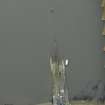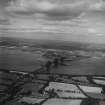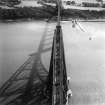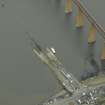Scheduled Maintenance
Please be advised that this website will undergo scheduled maintenance on the following dates: •
Tuesday 3rd December 11:00-15:00
During these times, some services may be temporarily unavailable. We apologise for any inconvenience this may cause.
South Queensferry, Hawes Pier, Beacon
Lighthouse (19th Century)
Site Name South Queensferry, Hawes Pier, Beacon
Classification Lighthouse (19th Century)
Alternative Name(s) Hawes Pier Lighthouse
Canmore ID 90334
Site Number NT17NW 172.01
NGR NT 13679 78396
Datum OSGB36 - NGR
Permalink http://canmore.org.uk/site/90334
- Council Edinburgh, City Of
- Parish Dalmeny
- Former Region Lothian
- Former District City Of Edinburgh
- Former County West Lothian
NT17NW 172.01 13585 78649
Location formerly entered as NT 1358 7865.
Formerly also entered as NT17NW 111 at cited location NT 13585 78649.
For (corresponding and associated) beacon on the pierhead at North Queensferry harbour (NT 13129 80359), see NT18SW 98.05 .
(Listed under South Queensferry, West Lothian; Ferry Landings: location cited as NT 1378, NT 1478). Immediately S of the mural chamber [within the S end of the centre wall of the pier] stands a small lighthouse, the two buildings being separated by a double flight of six steps 2ft 8ins [0.8m] wide which rise from E and W to give access, at a height of 3ft 8ins [1.1m] to the lighthouse door. The lighthouse itself is a hexagonal tower, standing on a circular base which projects radially 1ft 3ins [0.4m]. Above the base, which consists of a single course, there are three rusticated courses showing heavy pocked decoration; next, above a 4-inch [102mm] intake, a blank arch on every face except the N, with further pocked decoration on the angles and cable-moulding at the springing-line, and at the top a moulded cornice supporting a hexagonal light-chamber with three glazed and three opaque sides. The door, 6ft [1.8m] high, occupies the arch on the N face. The N and S arches have human masks for keystones. A model of a boat under sail, which formerly served as a wind-vane on top of the lighthouse, is now preserved in the offices of British Railways, Waterloo Place, Edinburgh.
A Graham 1971.
The lighthouse has been built at the southern end of Hawes Pier and is a six sided sandstone structure, c 10m high. The sandstone is very weathered.
Site recorded by GUARD during the Coastal Assessment Survey for Historic Scotland, 'The Firth of Forth from Dunbar to the Coast of Fife' 18th February 1996.
No further information.
Site recorded by GUARD during the Coastal Assessment Survey for Historic Scotland, 'The Firth of Forth from Dunbar to the Coast of Fife' 18th February 1996.
([South] Queensferry: location cited as NT 137 784). At shore [S] end of Ferry Pier: John Rennie, c. 1812. Short hexagonal masonry tower, on circular stone plinth. Masonry of tower pebble-rusticated, with shallow inset arches, polished ashlar base course, moulded cornice with blocking course. Lantern originally as the North Queensferry light [NT18SW 39], now hexagonal, with large plate-glass panes.
J R Hume 1997.
This beacon is depicted, but not noted, on the 1982 edition of the OS 1:2500 map. It should not be confused with the fixed white light that is now mounted on a pole at the seaward (N) end of the pier.
Information from RCAHMS (RJCM), 3 March 2006.
Construction (1817)
Project (2007)
This project was undertaken to input site information listed in 'Civil engineering heritage: Scotland - Lowlands and Borders' by R Paxton and J Shipway, 2007.
Publication Account (2007)
Robert Stevenson advised on lighting arrangements at the piers. At Hawes Pier, erected ca.1817, he recommended repositioning the signal house reflector at the pier head at 12–15 ft above high water level, presumably the small hexagonal in plan lighthouse seen in the view which still exists. The light source would have been an Argand oil lamp.
The present timber lantern is not original and looks incongruous. This historic light is worthy of restoration to
its former glory with a copper lantern. The pier light at North Queenferry has been so restored.
R Paxton and J Shipway 2007
Reproduced from 'Civil Engineering heritage: Scotland - Lowlands and Borders' with kind permission of Thomas Telford Publishers.























